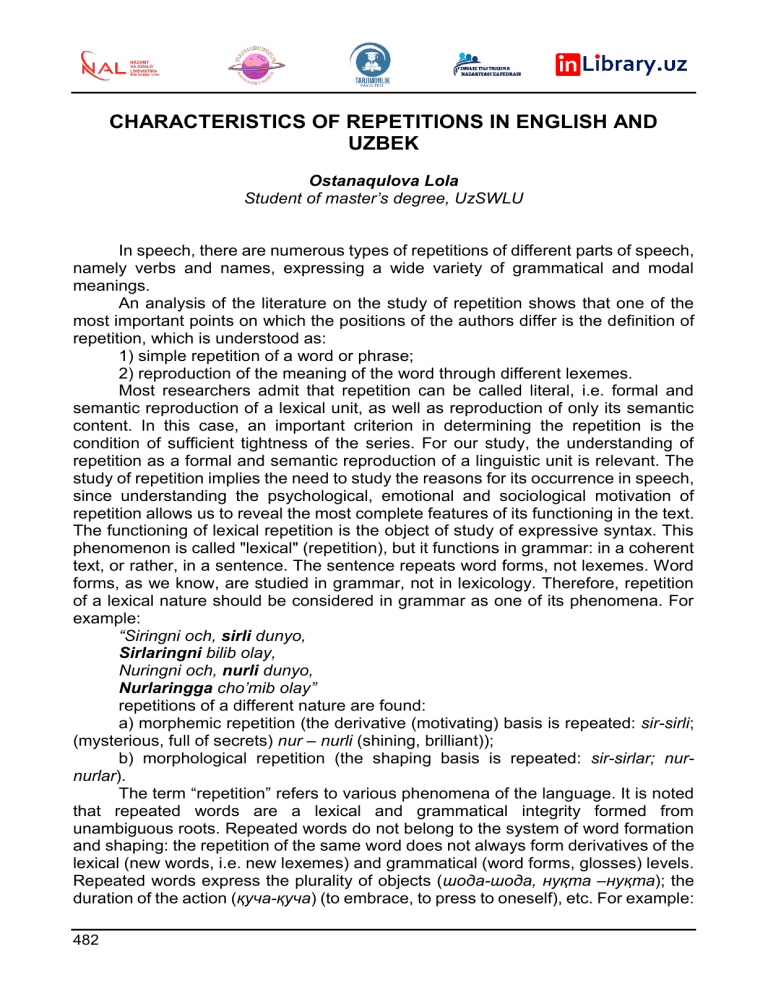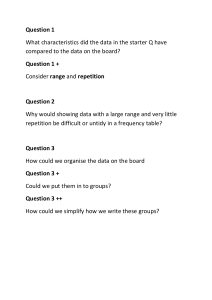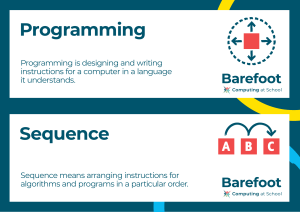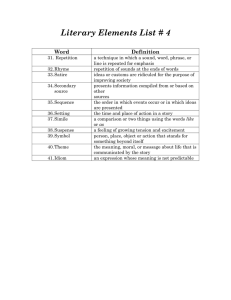Repetitions in English and Uzbek: A Linguistic Analysis
advertisement

CHARACTERISTICS OF REPETITIONS IN ENGLISH AND UZBEK Ostanaqulova Lola Student of master’s degree, UzSWLU In speech, there are numerous types of repetitions of different parts of speech, namely verbs and names, expressing a wide variety of grammatical and modal meanings. An analysis of the literature on the study of repetition shows that one of the most important points on which the positions of the authors differ is the definition of repetition, which is understood as: 1) simple repetition of a word or phrase; 2) reproduction of the meaning of the word through different lexemes. Most researchers admit that repetition can be called literal, i.e. formal and semantic reproduction of a lexical unit, as well as reproduction of only its semantic content. In this case, an important criterion in determining the repetition is the condition of sufficient tightness of the series. For our study, the understanding of repetition as a formal and semantic reproduction of a linguistic unit is relevant. The study of repetition implies the need to study the reasons for its occurrence in speech, since understanding the psychological, emotional and sociological motivation of repetition allows us to reveal the most complete features of its functioning in the text. The functioning of lexical repetition is the object of study of expressive syntax. This phenomenon is called "lexical" (repetition), but it functions in grammar: in a coherent text, or rather, in a sentence. The sentence repeats word forms, not lexemes. Word forms, as we know, are studied in grammar, not in lexicology. Therefore, repetition of a lexical nature should be considered in grammar as one of its phenomena. For example: “Siringni och, sirli dunyo, Sirlaringni bilib olay, Nuringni och, nurli dunyo, Nurlaringga cho’mib olay” repetitions of a different nature are found: a) morphemic repetition (the derivative (motivating) basis is repeated: sir-sirli; (mysterious, full of secrets) nur – nurli (shining, brilliant)); b) morphological repetition (the shaping basis is repeated: sir-sirlar; nurnurlar). The term “repetition” refers to various phenomena of the language. It is noted that repeated words are a lexical and grammatical integrity formed from unambiguous roots. Repeated words do not belong to the system of word formation and shaping: the repetition of the same word does not always form derivatives of the lexical (new words, i.e. new lexemes) and grammatical (word forms, glosses) levels. Repeated words express the plurality of objects (шода-шода, нуқта –нуқта); the duration of the action (қуча-қуча) (to embrace, to press to oneself), etc. For example: 482 Унинг нурлари шода-шода зиёга айланиб, этак-этак бахтга эврилиб, қучоқ-қучоқ толе бўлиб, иккисининг бошидан қуйилаётганга ўхшарди. Repetition at the level of syntax is carried out mainly in microtext. Microtext is not a single sentence, but a collection of several sentences. Researchers have repeatedly noted the lack of independence of the content of a single sentence. Appeal to this issue arose, first of all, in the study of the functioning of forms of belonging. Similar phenomena were noted in the studies of A.N. Kononov. These researchers came to the conclusion that one sentence is not enough for a complete understanding of this kind of formations. He also spoke about combining two or more “independent” sentences into something unified when studying the phenomena of different aspects of the syntax. However, the nature of this phenomenon in the framework of Uzbek linguistics remained unexplored for a long time. Means of anaphoric and cataphoric communication can combine contact and distant sentences. In the first case, the sentences in the microtext are interconnected strictly in a linear sequence. In the second case, they combine sentences that are at a certain distance from each other into one microtext. For example: “Ignorant of the long and stealthy march of passion, and of the state to which it had reduced Fleur; ignorant of how Soames had watched her, ignorant of Fleur’s reckless desperation, ignorant of all this, everybody felt aggrieved.” Repetitions convey significant additional information of emotionality, expressiveness and stylization; serve as an important means of communication between sentences, while sometimes subject-logical information can be difficult to separate from additional information. REFERENCES: 1. English Tongue Twisters – М., 1996. 2. Гальперин И.Р. Очерки по стилистике английского языка. – М.: Изд-во лит – ры на иностр. яз, 1988. 3. Кононов А.Н. Грамматика современного узбекского литературного языка. – М.: Л.: Наука, 1990. 4. Хожиев А. Ҳозирги ўзбек тилида форма ясалиши. – Ташкент: Ўқитувчи, 1979. 483






